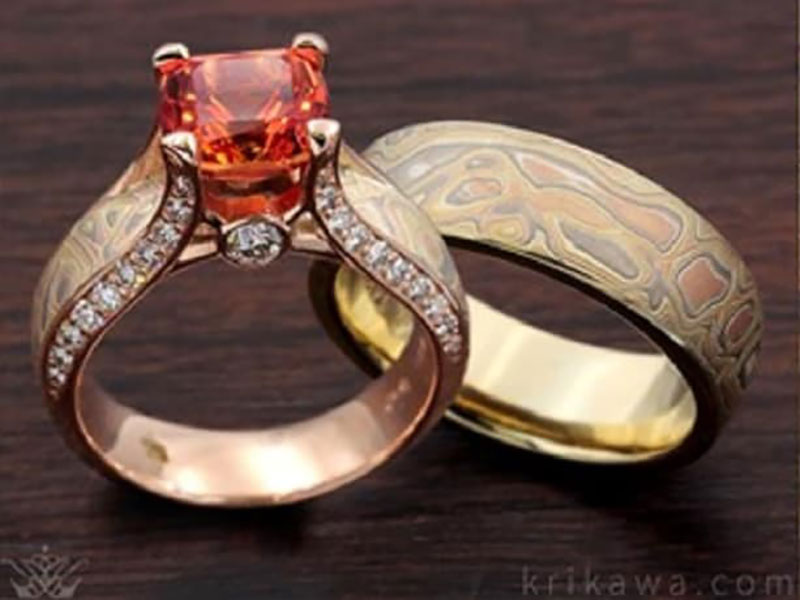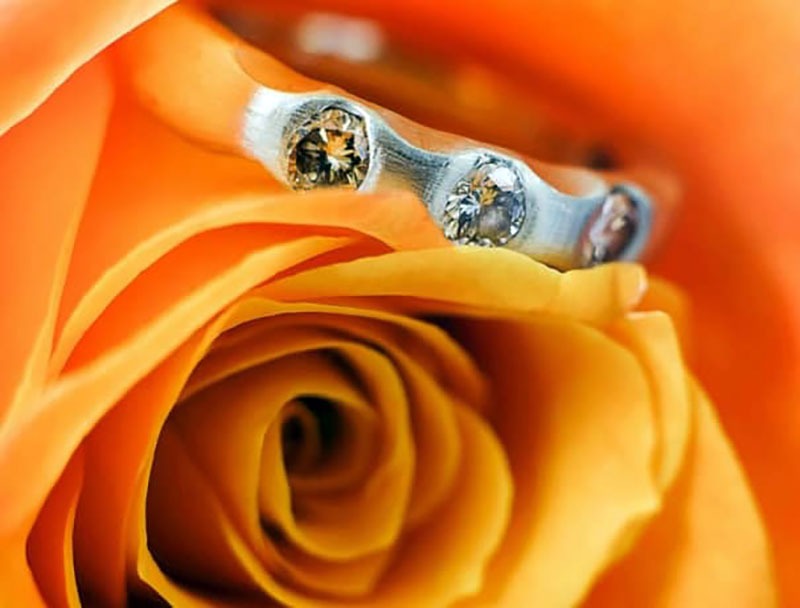
When it’s time to buy a diamond, we spend a significant amount of time juggling their characteristics to find a gemstone with a combination of qualities that suits our style, our needs, and our budget. The color of white diamonds plays an important role in its value.
On the other end of the spectrum, we are seeing diamonds of all colors being used in all types of jewelry these days. Diamond-lovers are starting to flock to those with vibrant hues. Called fancy color diamonds, these gems exist in a rainbow of yellows, reds, pinks, blues, greens, purples and all shades in-between.
Can you name four of the world’s most famous diamonds? Here’s a little help: the Hope Diamond, the Koh-I-Noor, the Moussaieff Red, the Heart of the Sea (that one is fiction, but we’ll allow it). What distinguishes these famous stones? They are famous diamonds yes, but what else? They are all fancy colored diamonds too!
The famous Smithsonian Museum once displayed the amazing rainbow hues of diamonds. There were yellow, brown, green, pink, blue, red, and even completely colorless diamonds that were so spectacular, the exhibition was a huge success.

How fancy color diamonds get their color
- Trace elements in the diamonds can produce color. For instance, the presence of nitrogen results in a yellow diamond.
- When radiation is present during a diamond’s creation, green diamonds are born.
- Inclusions are undesirable in a colorless stone but can contribute unique tones and flashes of color in a fancy color diamond.
Gemologists can create fancy color diamonds by manipulating the colors of less desirable diamonds. Irradiation, followed by high heat treatment, can turn brownish and pale yellow diamonds into richly colored, affordable gems.
Because natural colored diamonds are rare and can be quite expensive, diamond treatments are common and make owning them more affordable. Always assume that any affordable fancy color diamond has been treated in some way to enhance its color and other characteristics. Ask for a grading report that verifies the authenticity of any color diamond marketed as natural.
Synthetic Color Diamonds
Synthetic colored diamonds, created in a laboratory, are another affordable option you’ll find when you shop for vibrant diamonds. Although synthetic diamonds are not natural stones, they are genuine stones. Their origins should always be disclosed.
Before you go shopping, get familiar with color diamond shade variations and learn the special Four Cs of fancy colored diamonds.
How Color Diamonds are Valued
The most expensive diamonds in the world are red diamonds. This is because of their true scarcity, but even the finest red diamond can be degraded in value if not cut to emphasize its valuable details, such as:
- Hue: The actual color that the diamond displays.
- Tone: The tone describes how dark or light the color of the stone might be. For example, a pink stone may have a lot of black tone to it and be darker than another stone that has more white and is lighter.
- Saturation: This is the critical attribute that describes the color’s brightness. The more saturated the hue, the more valuable the diamond.
- Distribution: Finally, the distribution is a measurement of how even the color is spread throughout the diamond.
While you can find ways of purchasing jewelry with these fancy colored stones, you will often find them as accents surrounding a larger center diamond. One of the most affordable and best ways to use fancy color diamonds is to add a splash of color to transform a lovely piece of jewelry into a real “stunner”.

 Quick ‘N Easy Way to Pinpoint Rings to Fit YOUR Style
Quick ‘N Easy Way to Pinpoint Rings to Fit YOUR Style